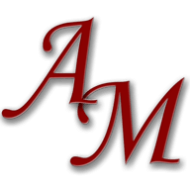“My work is what it is due to learning traditional art approaches and techniques. Hardware and software are just tools”
Lente Scura is a talented Italian artist based in Rome who combines two main techniques to create fascinating paintings: digital painting and photo-manipulation. The artist statement describes very well the concept of the dreamlike work: “Lente Scura takes the viewer on an emotional journey through visually striking digital compositions filled with dramatic anguish and beauty, giving insight into the complexity of emotions of the subjects of each painting”.
This artist’s academic background includes two bachelor’s degree —one in Literature and another one in Painting and Drawing— and a Master of Fine Art in Digital Art and Media. The roots of great masters’ techniques are present too, Lente Scura combines different styles: Surrealism movements of the early to mid-1900s, American painting of the mid-1800s, the German Expressionism and, of course, the classical painting of Italy.

In this Q&A Lente Scura explains how to use Photoshop to create unique paintings, the advantages of digital art, and provides valuable advice to young artists interested in digital art:
How do you start work — do you have any rituals?
I don’t have rituals in the strictest sense. I will, over the course of weeks, have inspirations and concepts mulling around in my head if you will. I tend to think about them and plan and design in this manner instead of spending large amounts of time fleshing out ideas on paper. This means the work is a stream of consciousness in its concept and its design. From there, it is finding the best references via stock images or scheduling time with art models to build the foundational elements. Once all resources are pulled together, I will make a rough and loose composition in Photoshop. That rough composition then becomes the underpainting layer. In traditional approaches, one will create a foundational sketch or underpainting and then create the final painting but building up layers. This is what I do, but I use a photographic based layer of arranged elements.
After the base composition is completed, I will create the final painting by using a painter over approach. This approach will slowly remove the foundation composition with a painted version that tends to be very different. Since I make changes as I work, the painting and the process will take on a stream of consciousness stage where I allow both technical consideration and mood and emotions to influence the final design and concept.

How has your style changed over the years?
The amount of work is lessened in terms of volume. I think more about each work and its meaning. The focus on the conceptual meaning of work has forced me to slow down the volume of work.
How did you discover www.posespace.com?
I discovered Posespace when researching a concept I was developing. I was happy to discover their site and services and their reference material of the human form has helped greatly in the development of paintings and their concepts.
Why digital Art?
I come to prefer for now digital art. Digital art allows for a combination of planning and fluid editing. I have come to like the ability to adjust based on technical considerations and based on my mood and inspiration. One of the frustrating aspects of more traditional approaches is being locked into a composition or taking the pains to go back to the drawing board and start painting over. Digital art allows me to make edits, adjustments, and corrections with minor efforts and with very little lost production time.

Do you have a favorite living artist, whether famous or completely unknown?
Not really. I tend to look to artists of the past, though there are many talented artists I see on social media that I follow. I would say there’s not one living today that I consider a favorite, though their work inspires me. Some of the artists listed below I admire and look up to and consider mentors. Only one is currently living and that is Odd Nerdrum, whose work affects me greatly.
Otto Dix, Albrecht Durer, Kathe Kollwitz, J.M. W. Turner, William Blake, Thomas Eakins, Edward Hopper, Winslow Homer, John Singer Sargent, Michelangelo Merisi da Caravaggio, Tiziano Vecelli (Titian), Jacopo Tintoretto, Artemisia Gentileschi, Rembrandt Harmenszoon van Rijn, Salvador Dali, Diego Velazquez, Francisco Goya, Frida Kahlo.
What advice would you give to young artists interested in digital art?
Start with traditional art first. My work is what it is due to learning traditional art approaches and techniques. Hardware and software are just tools. They don’t make your work better and if you don’t have a firm traditional foundation, all the hardware and software will not help you. Having a well rounded traditional art background will allow you to transition to digital art and apply your knowledge easily. Equally, it will help you to push the technology in ways that have not been seen before. The artist is the visionary, technology of any form and making is just the tool.

LenteScura’s website: http://lentescura.net
ArtStation: https://www.artstation.com/lentescura
Etsy: https://www.etsy.com/shop/theartoflentescura
Behance: https://www.behance.net/LenteScura
Instagram: https://www.instagram.com/lentescura
Interview by Andrea Miliani
